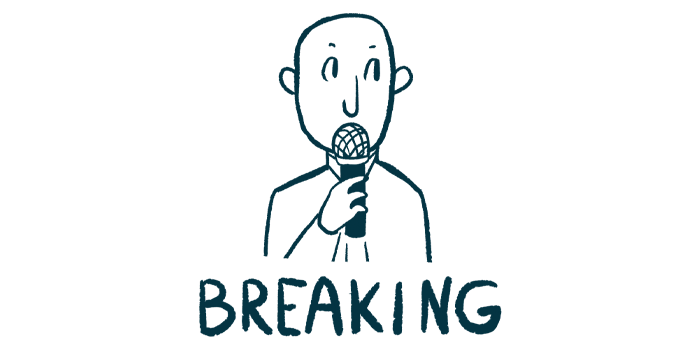Phase 1 Trial of TAK-755, Potential VOC-easing Therapy, Enrolling in US

A Phase 1 trial evaluating the safety and pharmacological properties of TAK-755 — Takeda’s experimental therapy for painful vaso-occlusive crises (VOCs) — in adults with sickle cell disease (SCD) is actively recruiting patients for its intermediate dose group.
SCD patients, ages 18–65 years, who had no VOCs in the previous 21 days and did not receive a blood transfusion either within the past month or two transfusions in the past three months, are being enrolled at 14 sites across the U.S. More information can be found here.
“Our investigational treatment, TAK-755, is a recombinant [lab-made] form of the ADAMTS13 enzyme, which is involved in regulation of blood clotting,” Björn Mellgård, MD, PhD, Takeda’s vice-president and global program lead of Rare Genetics & Hematology, said in an emailed statement to Sickle Cell Disease News.
“It is the first and only compound of this kind in clinical development and aims to directly restore ADAMTS13 activity,” Mellgård added.
The trial’s design, as well as an update on its status, were recently presented through a poster at the 2021 American Society of Hematology (ASH) Annual Meeting & Exposition, held Dec. 11–14 in Georgia and online. The poster was titled “Recombinant ADAMTS13 for Patients with Sickle Cell Disease: Design of a Phase 1 Safety, Tolerability, Pharmacokinetics, and Pharmacodynamics Study.”
VOCs are a common painful complication of SCD caused by blood vessel blockage. Increasing evidence suggests that von Willebrand Factor (VWF), a blood clotting protein, may contribute to VOCs by forming ultra-large protein structures with increased ability to stick to cells and blood vessels.
Notably, a previous study reported that during VOCs, SCD patients have higher blood levels of large VWF molecules and a lower-than-normal activity of ADAMTS13, an enzyme that normally breaks down VWF.
“This imbalance may contribute to obstructions in microcirculation that can result in pain, organ damage and stroke,” Mellgård said.
Originally developed by Shire, which is now part of Takeda, TAK-755 is a lab-made version of ADAMTS13 meant to be delivered directly into the bloodstream. By increasing ADAMTS13 levels in the blood, the therapy is thought to prevent the formation of these ultra-large VWF structures, thereby reducing VOCs.
The Phase 1 trial, called RAISE-UP (NCT03997760), is evaluating the safety, tolerability, pharmacokinetics, and pharmacodynamics of increasing single doses of TAK-755 in adults with SCD. Pharmacokinetics refers to the therapy’s movement into, through, and out of the body, while pharmacodynamics refers to its effects on the body.
The study will be divided into two parts, and the design of its first part was shared in the poster presentation.
In this part, up to 20 SCD patients will be enrolled and randomly assigned in a 3:1 ratio to a single into-the-vein infusion of one of three doses of TAK-755 — 40, 80, and 160 international units per kg — or to a placebo.
All patients will complete a last assessment at 28 days post-treatment. Participants on stable hydroxyurea — a therapy used to lower VOC frequency — may continue treatment during the trial.
Enrollment into the next dosing group will be allowed only after a specialized committee reviews safety data and gives its approval.
The study’s main goals are to assess the occurrence and frequency of adverse events, serious adverse events, and abnormal vital signs or laboratory findings, as well as the development of antibodies against the therapy that can limit its efficacy.
Secondary goals include evaluating TAK-755’s pharmacological properties. Among these, researchers will assess the effect of the therapy on VWF and platelet counts and whether patients’ levels of free hemoglobin and thrombospondin-1 — two known suppressors of ADAMTS13 — affect TAK-755’s activity and VWF levels.
RAISE-UP has completed enrollment for the first dose group, in which three patients were treated with TAK-755 and one received a placebo.
Given that no treatment-related serious adverse events were reported and no antibodies against the delivered enzyme were detected in this group, the committee considered that the trial could start recruiting for the second dose group, which will involve eight patients (six assigned to the therapy and two to a placebo).
Eight additional patients are expected to be enrolled for the planned third and high-dose group.
“TAK-755 is being investigated in a number of clotting related disorders, including SCD, where it has the potential to address the imbalance between ADAMTS13 and von Willebrand Factor (VWF) present in these conditions,” Mellgård said.







